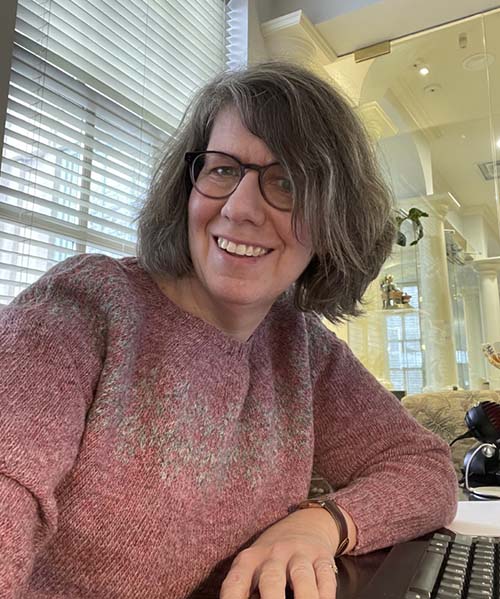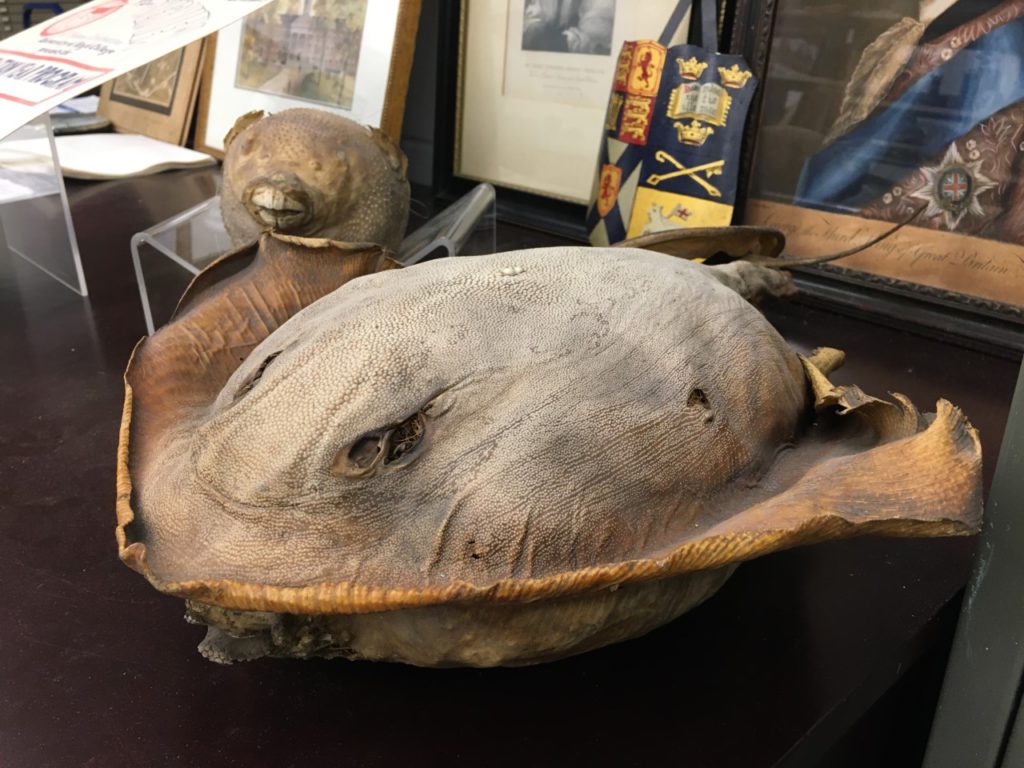Before Tracy Lenfesty interviewed for the role of university librarian at King’s, she asked to visit the library. It was the summer of 2021 and Lenfesty was then the head librarian at the Nova Scotia Department of Natural Resources (DNR), a library where she had worked for nearly 25 years.
 At DNR she says, her work was focused on policy, geoscience, forestry, biology, land use and other realms she characterizes as “things tied to what’s on the ground.” On the surface the collection at DNR sounds a world away from the books you would find in a library serving students of the humanities and journalism. But the more she saw of the college’s collection, the more it became clear to Lenfesty that her work at DNR gave her a lot of insight into King’s.
At DNR she says, her work was focused on policy, geoscience, forestry, biology, land use and other realms she characterizes as “things tied to what’s on the ground.” On the surface the collection at DNR sounds a world away from the books you would find in a library serving students of the humanities and journalism. But the more she saw of the college’s collection, the more it became clear to Lenfesty that her work at DNR gave her a lot of insight into King’s.
“I went downstairs to the display cases and here was a display of natural history by Professor Henry How, who I knew about from my geosciences work. I knew he had been a prof at King’s and there was a display of some of his writings, a book called The Minerology of Nova Scotia which I had in my collection at DNR and have used many times.
“There were also some fossils downstairs and a coral and … a copy of Dawson’s Acadian Geology, which is a very important work on the geology of Nova Scotia … So all of these things came together and I thought ‘Well actually Tracy, you know quite a lot about the history of this province from the [research on] geoscience and land use and crown land … and that ties into the history of the province, which ties into King’s because it is such an old university.”
It’s not hard to see why Lenfesty impressed the selection committee when she eventually interviewed: in addition to her expertise in library sciences and the understanding she brings of relevant Nova Scotian history, community spirit lies at the heart of her approach.
“Any job, any organization that you’re part of—any community you’re part of—is about getting to know the people, knowing who knows what, how things works, and trying to help that. … I’m here to learn about how things work at King’s and how I can contribute to that.”
Outside of work, Lenfesty was a founding board member of Halifax Humanities and has worked with St. George’s YouthNet, too. She praises the support King’s—and King’s students—have offered to both organizations, saying “It’s very important for people to see the other side of life, [and] look outside of the Quad sometimes as part of your education and your development as a human being.”
In November, Lenfesty took up her new role as university librarian at King’s. When you begin working with a new collection, she says you start with the vocabulary.
“You have to learn to speak the language that the people who are using the library are speaking, because you have to communicate with them.”
Fundamentally, she says, no matter what the collection, her role is informed by the same guiding principles. “Libraries are about collecting materials relevant to the people they serve: they’re about preserving those materials, organizing them so they’re accessible to people. And that’s the same no matter what the topics are.”
The collection Lenfesty oversees contains far more than books: it includes the Weldon Collection of pottery and porcelain, Renaissance and medieval manuscripts and incunabula, a Natural History Collection and various items representing day-to-day life at the university, donated over the years. These include a women’s university blazer from the 1960s and a poster from a protest over tuition fees donated by the King’s Students’ Union.

Items from the Natural History Collection
She says that the pervasive effects of a consumerist culture make it hard to communicate why collections like these are important—particularly when it costs money to preserve them. “People have such a mentality of shopping and consumerism—any store you go into is only going to stock things that people want to buy today. But a library or a museum or a special collection cannot follow that model because it is trying to look back and preserve something.”
Though she joined King’s only a few short months ago, it is a return of sorts. During the 1990s while studying for a Masters in Library and Information Studies at Dalhousie, Lenfesty took a job as a Don in Cochran Bay. So are today’s King’s students different from those she worked with in the 90s?
Lenfesty says that King’s continues to attract “conscientious” students.
“Certainly the ones that I see in the library, they are quite hard-working, and they like a quiet spot.” Laughing she adds, “I’ve been shushed once in this library, you know?”
“I think that the people who come here, come here very deliberately. There’s something different and special here that they want and that’s why they come. And I don’t think that’s different—King’s has always been small and a bit different and you know we probably always will be and I don’t think that’s a bad thing.
“There’s room in the world for all different sorts of institutions and I think there’s room in Halifax for all sorts of different institutions and that’s why King’s is here—to be that little bit different.”

